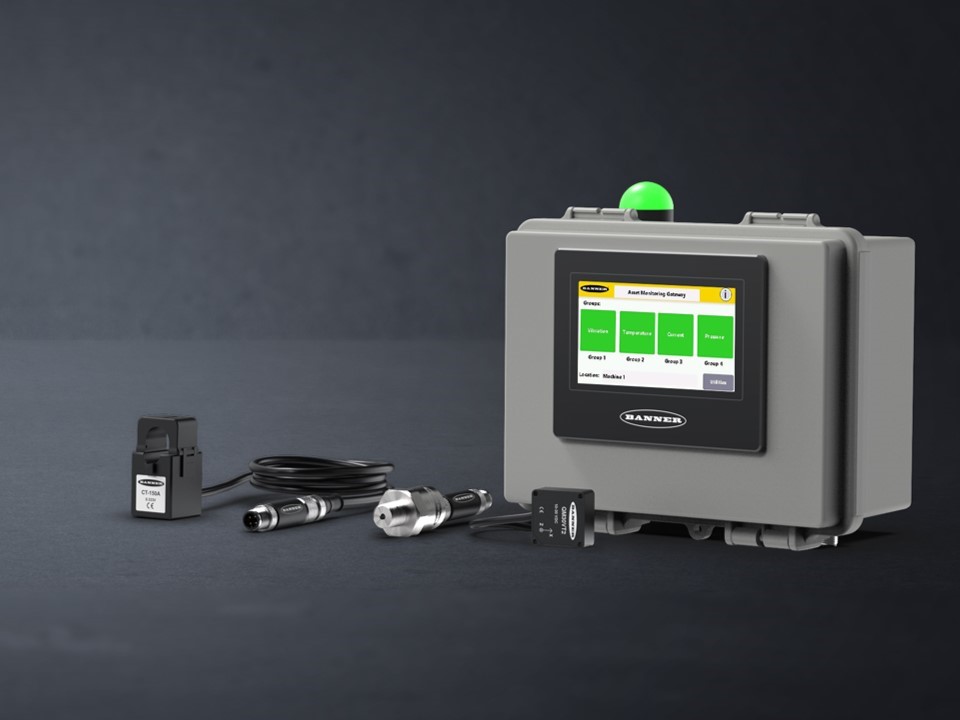Reap the Benefits of Asset Monitoring with a Simplified Solution
Smart manufacturers know that monitoring plant assets is essential to maximizing productivity, minimizing downtime and optimizing equipment usage. Fortunately, current solutions drastically reduce the time and effort needed to conduct effective asset monitoring, making the benefits easily accessible to manufacturers big and small. This blog will highlight the advantages of asset monitoring, discuss use cases and introduce a simplified solution for easy asset monitoring.

What is Asset Monitoring?
Today’s asset monitoring entails real-time observation of the performance of the assets in a facility with the goal of reducing downtime, increasing throughput and maximizing asset utilization. Collecting and analyzing data from connected sensors that monitor variables such as vibration, differential pressure, temperature, humidity, tank level and other specifications allows users to make informed decisions that can increase uptime and productivity, prevent unplanned downtime, optimize production schedules and save costs on utility bills.
Current solutions for asset monitoring make it an easier endeavor – gone are the days of time-consuming manual rounds to monitor equipment, record data and log it into a maintenance system. Instead, today’s asset monitoring solutions involve sensors, devices such as gateways, and Ethernet or cellular connectivity. Using these modern technologies, users can view the collected data in real time either locally via an onboard touchscreen display or remotely using a cloud platform. Customizable dashboards make it easy to evaluate data for operational performance and to detect abnormalities in equipment health and behavior.
Use Cases for Asset Monitoring
When it comes to operating an industrial manufacturing facility, production equipment is the most valuable asset. Asset monitoring for these purposes can reap the advantages described below:
| Temperature and Humidity Monitoring | Production equipment and processes require accurate temperature conditions to function properly and keep product within specifications. Asset monitoring for temperature and humidity allows users to view this data, determine whether threshold limits have been exceeded and take quick action to ensure equipment is running properly, boosting reliability and product quality. |
| Vibration Monitoring | Excessive vibration is usually a cause for concern, but without monitoring, it may go undetected until serious issues arise. The ability to detect unusual vibrations in real-time alerts maintenance techs to problems before they result in downtime, ensuring uptime and reducing unplanned downtime. |
| Predictive Maintenance | Tracking asset health through temperature and humidity monitoring, vibration monitoring and other measurements can provide valuable insight into the health of the production equipment. Viewing real-time data permits maintenance crews to decide when maintenance should be performed on assets before catastrophic failure and during planned outages, reducing downtime and increasing uptime. |
| Energy Savings | As manufacturers look to increase sustainability, asset monitoring can be employed to track and evaluate the energy usage of production and other equipment, allowing adjustments to be made or unused equipment to be turned off to save on utility costs. It can also be used to alert operators to power surges or unusual activity that may indicate potential problems. |
| Remote Asset Monitoring | If users opt for cloud-based monitoring, it is possible to monitor in real time the health of remotely located equipment without sending technicians out to take readings, enabling predictive maintenance on these assets while also saving labor hours. |
| Overall Equipment Effectiveness | By evaluating the availability and performance of production equipment, manufacturers can determine the effectiveness and efficiency of each piece of machinery in the facility, helping to increase the throughput and maximize efficiency of the entire plant. |
A Simplified Solution
These and other real-time insights into the operation and performance of the assets within a manufacturing facility can be achieved by using a simplified solution called the Asset Monitoring Gateway (AMG) with SNAP ID from Banner Engineering. The gateway features a user-friendly, no-code set up and the ability to automatically recognize up to 20 compatible wired sensors that can measure vibration, differential pressure, temperature, humidity, tank level and more, allowing manufacturers to monitor anything from conveyors to fans to pumps to motors to compressed air systems to dust collection units.
Deployment of the AMG with SNAP ID is quick and easy because the system is preconfigured to connect to a variety of compatible SNAP ID sensors without the need for programming. The Asset Monitoring Gateway with SNAP ID is designed to accommodate up to 20 condition-monitoring sensors, which simply plug into the gateway and start to work.
Further simplifying the process of asset monitoring, the solution’s onboard touchscreen display allows users to commission the sensors, create unique names for sensors and groups and set warning and alarm thresholds. An onboard status indicator shows the status of the asset at a glance, via a green-, yellow- and red-light system. The system can be connected to Banner’s Cloud Data Services (CDS) using Ethernet or cellular connectivity and dashboards can be auto generated or customized to specific needs with drag and drop widgets or uploaded images so users may visualize the operation.
The Asset Monitoring Gateway with SNAP ID simplifies asset monitoring set up and activities, allowing manufacturers to take advantage of predictive maintenance, energy savings, informed decision making and other opportunities that will help increase uptime, cut costs and optimize production. JHFOSTER or its Sensors Incorporated division can provide more information about this solution and how it can help improve operations in your facility.
